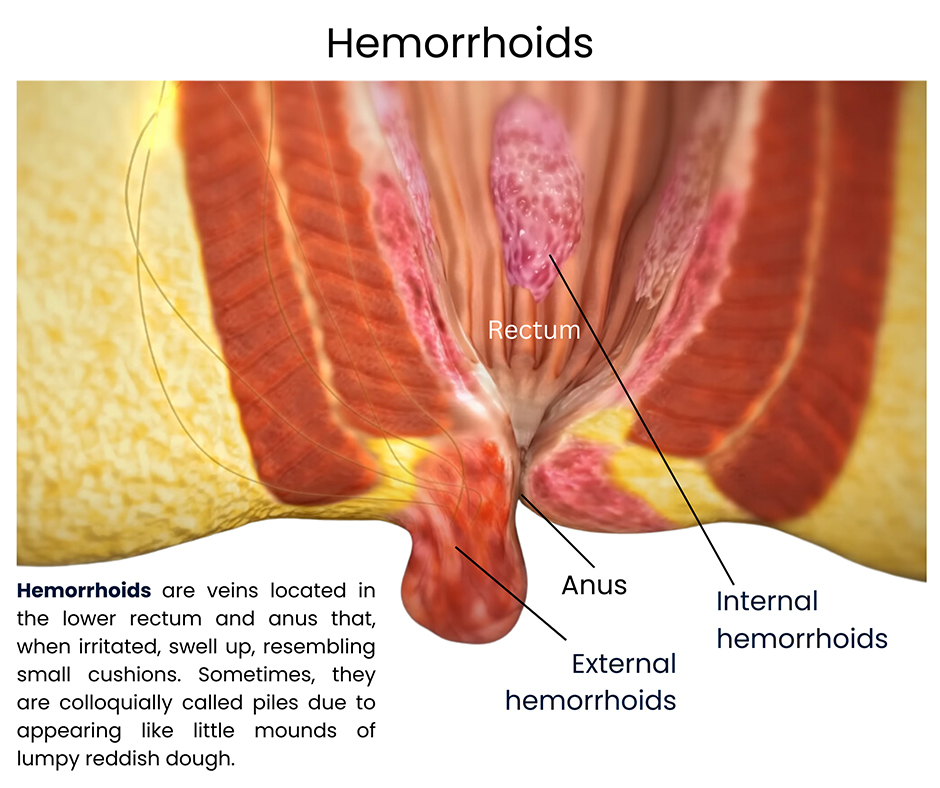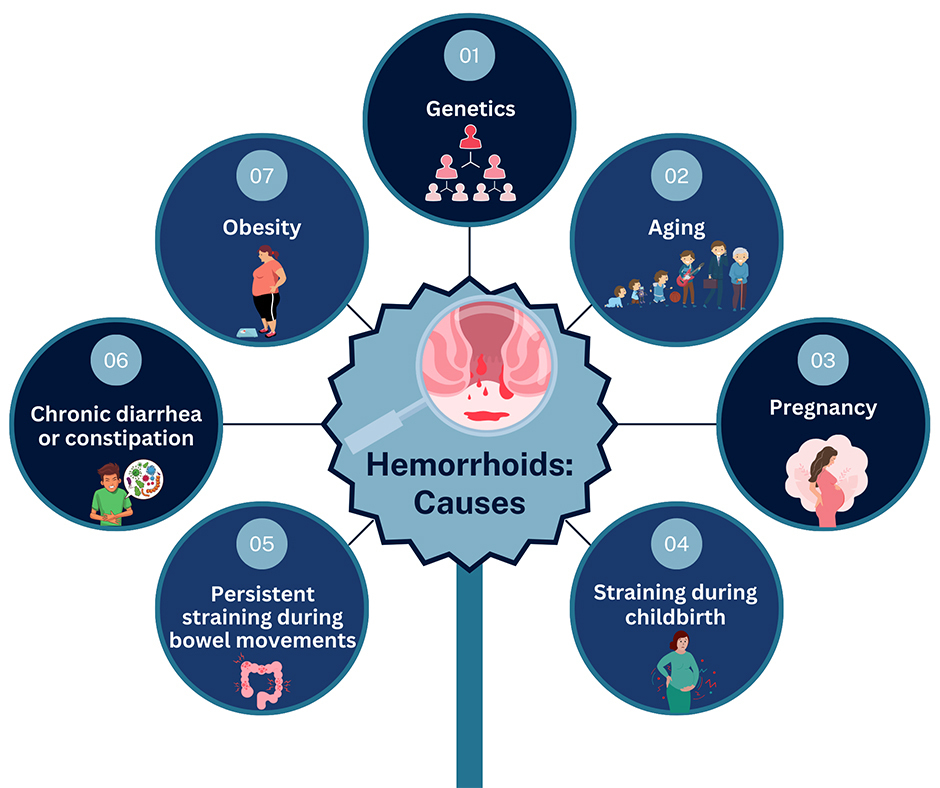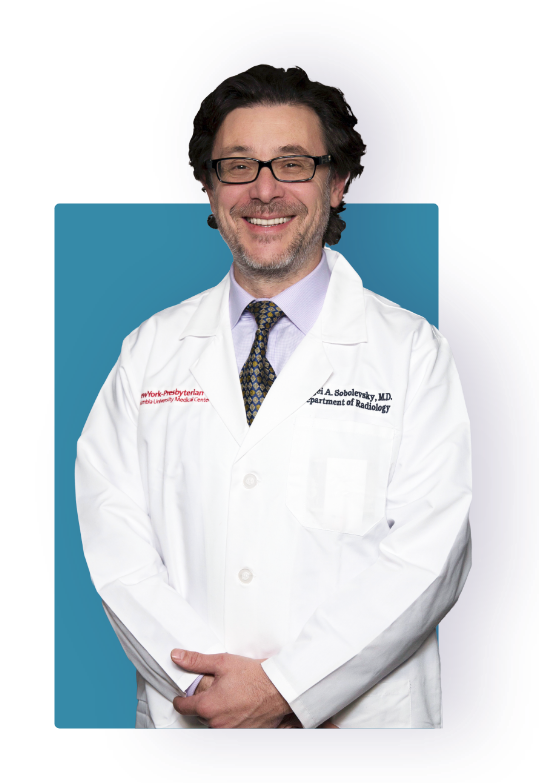Hemorrhoids are uncomfortable lumps that initially manifest as itching and irritation around the anus. Without proper treatment, they tend to grow in size, eventually leading to bleeding and ultimately multiplying. An irritated hemorrhoid might be likened to a deteriorating gummy bear. While you may feel the need to use over-the-counter solutions, it’s crucial to seek a professional diagnosis before attempting any remedies. Dr. Sergei Sobolevsky, an expert at the Downtown Vein & Vascular Center in Brooklyn, NY, can accurately determine if you have hemorrhoids, assess whether home treatments are safe, or advise on the necessity of his expert medical intervention. Act promptly to avoid worsening symptoms and seek guidance from Dr. Sobolevsky.
What Exactly Are Hemorrhoids?

Hemorrhoids are veins located in the lower rectum and anus that, when irritated, swell up, resembling small cushions. Sometimes, they are colloquially called piles due to appearing like little mounds of lumpy reddish dough.
There are two fundamental types of hemorrhoids:
- Internal, forming inside the rectum or rectal canal
- External, developing beneath the skin around the exterior of the anus
Although internal hemorrhoids are not visible, they can induce pain, with individuals often unaware of their presence. If you’re encountering pain or bleeding in or around your anus, seeking the expertise of Dr. Sergei Sobolevsky at the Downtown Vein & Vascular Center in Brooklyn, NYC, is crucial. Only a medical professional can accurately diagnose and treat internal hemorrhoids, and Dr. Sobolevsky possesses both the knowledge and technology to alleviate the pain and discomfort associated with hemorrhoidal conditions.
What Are the Visual Characteristics of Hemorrhoids?
Examining the region around your anus can be challenging, necessitating the expertise of a medical professional for the most precise diagnosis. However, if you employ a small hand-held mirror while bending over, you might discern hemorrhoids as reddish or purplish protuberances.
These bumps often exhibit distinctive features, such as:
- Mucus coverings
- Bloody secretions
- A cluster of soft lumps
- A solid, protruding lump extending from your anus
Internal hemorrhoids remain unseen, and their presence typically doesn’t cause discomfort until they progress.
Indications that you might have internal hemorrhoids involve:
- Discovering blood in your stool or in the toilet bowl after a bowel movement
- Experiencing irritation and pain if the hemorrhoids extend to the point of visibility.
What if My Hemorrhoids Aren’t Visible?
In most cases, you may sense the discomfort of anal inflammation before actually observing it.
While you might detect slight traces of blood on toilet tissue after wiping, the sensations you experience can encompass:
- Irritation and itching around your anus
- Pain during bowel movements, eventually becoming persistent
- Swelling around the exterior of the anus
- Discomfort while sitting
Typically, hemorrhoids are mildly uncomfortable at their worst. Nevertheless, seeking a professional diagnosis is crucial as your symptoms could indicate another, potentially more serious condition like cancer.
When left untreated, hemorrhoids can lead to various complications, including:
- Infections
- Impaired blood flow, potentially resulting in blood clots
- Anemia due to excessive internal bleeding
- Severe pain
Symptoms may vary based on the type of hemorrhoids you’re experiencing.
The four most common hemorrhoid types and their associated symptoms are:
- Internal-external: a combination of both, often causing common signs like bleeding and pain.
- Prolapsed: a sizable hemorrhoid pushed outside the anus.
- Strangulated: an external hemorrhoid without blood supply, extremely painful during bowel movements and walking.
- Thrombosed: occurs when there’s a blood clot, typically causing significant pain.
What Are the Causes Behind Hemorrhoids?
The connective tissue surrounding the veins in your rectum and anus can weaken due to various factors, resulting in swelling and bulging.
The primary causes of tissue weakening include:
- Genetics
- Aging
- Pregnancy, particularly if accompanied by constipation
- Straining during childbirth
- Persistent straining during bowel movements
- Chronic diarrhea or constipation
- Obesity
Hemorrhoids are a relatively common condition, with approximately 50 percent of the U.S. population experiencing inflamed anal veins at least once in their lives.
However, certain risk factors increase the likelihood of developing hemorrhoids, such as:
- Age between 45 and 65
- Engaging in strenuous activities and heavy lifting as part of your job
- Family history of the condition
- Prolonged periods of sitting on the toilet

What’s the Best Treatment for Hemorrhoids?
Dr. Sobolevsky may refer you to your local drug store for over-the-counter remedies to relieve your symptoms.
To be effective, though, these at-home treatments must be accompanied by certain lifestyle changes, such as:
- Losing weight
- Eating more fiber
- Restricting the amount of time you spend on the toilet
If at-home treatments don’t work within a week or 10 days, you may need to undergo a minimally invasive treatment called embolization. This is the safest and most effective means of treating bleeding hemorrhoids, and it’s one of Dr. Sobolevsky’s specialties. Performed in the office while you’re under twilight sedation, it reduces the risk of recurring hemorrhoids, while preventing rectal trauma and incontinence. Your symptoms improve almost immediately. Other treatment options may include electrocoagulation, sclerotherapy, and hemorrhoid band ligation.
To get a firm diagnosis and the most effective hemorrhoids treatment, contact Dr. Sobolevsky, a leading hemorrhoid treatment specialist. He’s the founder of the highly acclaimed Downtown Vein & Vascular Center in Brooklyn. His expertise enables him to use real-time imagery to assess and treat vascular issues.

I am Dr. Sergei Sobolevsky, a leading specialist in endovascular medicine. Having performed over 25,000 procedures throughout my career, I bring decades of experience in vascular and interventional radiology to my practice. I obtained my Doctor of Medicine (MD) degree from the University of Colorado School of Medicine in 1997 and completed my specialty clinical training in vascular and interventional radiology at Harvard University.
My dedication to excellence in patient care has been recognized through accolades such as being named a Castle Connolly Top Doctor and inclusion in the Top Doctors New York Metro Area lists for 2020, 2021, 2022, and 2023. With licenses in multiple states, I have also shared my expertise through presentations at various institutions in the US and abroad.
More About Dr. SobolevskyDowntown Vein Treatment Center
480 Court Street, Ste 101
Brooklyn, NY 11231
(718) 787-5559


